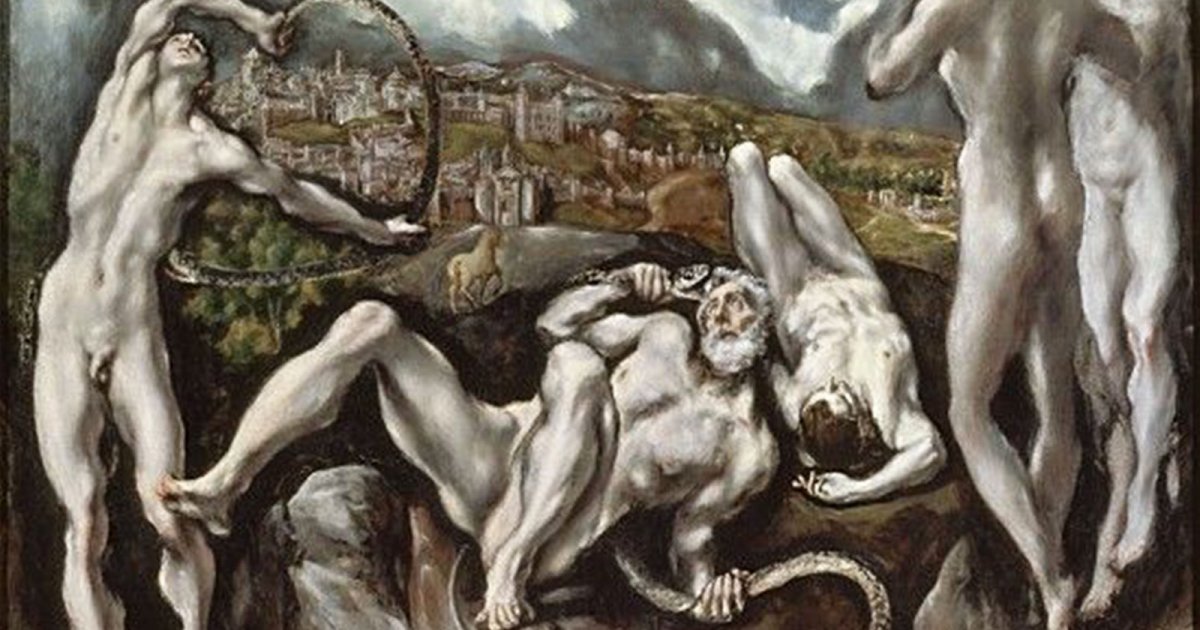NATIONAL GALLERY, Laocoön By El Greco
 Language: English / USA
Language: English / USA
This painting depicts the death of Laocoön who, according to Greek mythology, was killed together with his two sons by the goddess Athena, who had them strangled by sea serpents for trying to warn the Trojans about the wooden horse ruse devised by Ulysses.
El Greco, otherwise known as Doménikos Theotokópoulos, was born in Crete in 1541, yet lived in Spain, where he died in 1614. Here he offers an interpretation of the myth that breaks away from the classic telling.
Laocoön is on the ground with an expression of anguish and suffering on his face, with one of his sons already dead at his left and the other fighting for his life on the right. Two unfinished nude figures represent two Greek gods who watch impassively as the scene unfolds.
The sky is dark and the clouds menacing. The city of Toledo is in the background, where El Greco lived from when he was 26 years old and which he considered to be his second home.
El Greco’s style is extremely original. The nude bodies appear to be more like sketches than well-defined, as in the painting styles that preceded him. The color is unrealistic, the composition lacking perspective and the evident brush strokes tend to evoke the dramatic quality of the scene, rather than make it believable like its predecessors.
El Greco’s painting, which heavily influenced twentieth-century art–Pablo Picasso in particular–with his modernity, is a classic example of seventeenth-century Spanish Mannerism. Instead of attempting to portray nature rationally, like in the Renaissance period, he preferred to highlight the expressive and stylistic features of the work.
The meaning behind the painting is clouded in mystery: as the scene is set in Toledo, it is believed that El Greco intended to beseech his fellow citizens to not betray the spirit of the Catholic Reformation and God.
In fact, El Greco was a very devout Catholic and his paintings were always about religious subjects, like the others you can see here. So much so that this is the only one with a mythological theme and it is thought that the artist was influenced by a Roman statue of Laocoön that he saw in Rome.
Interesting fact: Currently the exact number of works attributable to El Greco has not been established, as he was also a sculptor. Some maintain that it is around 800, while others say it is only 285 and there are even those who would lower it to just 137.



